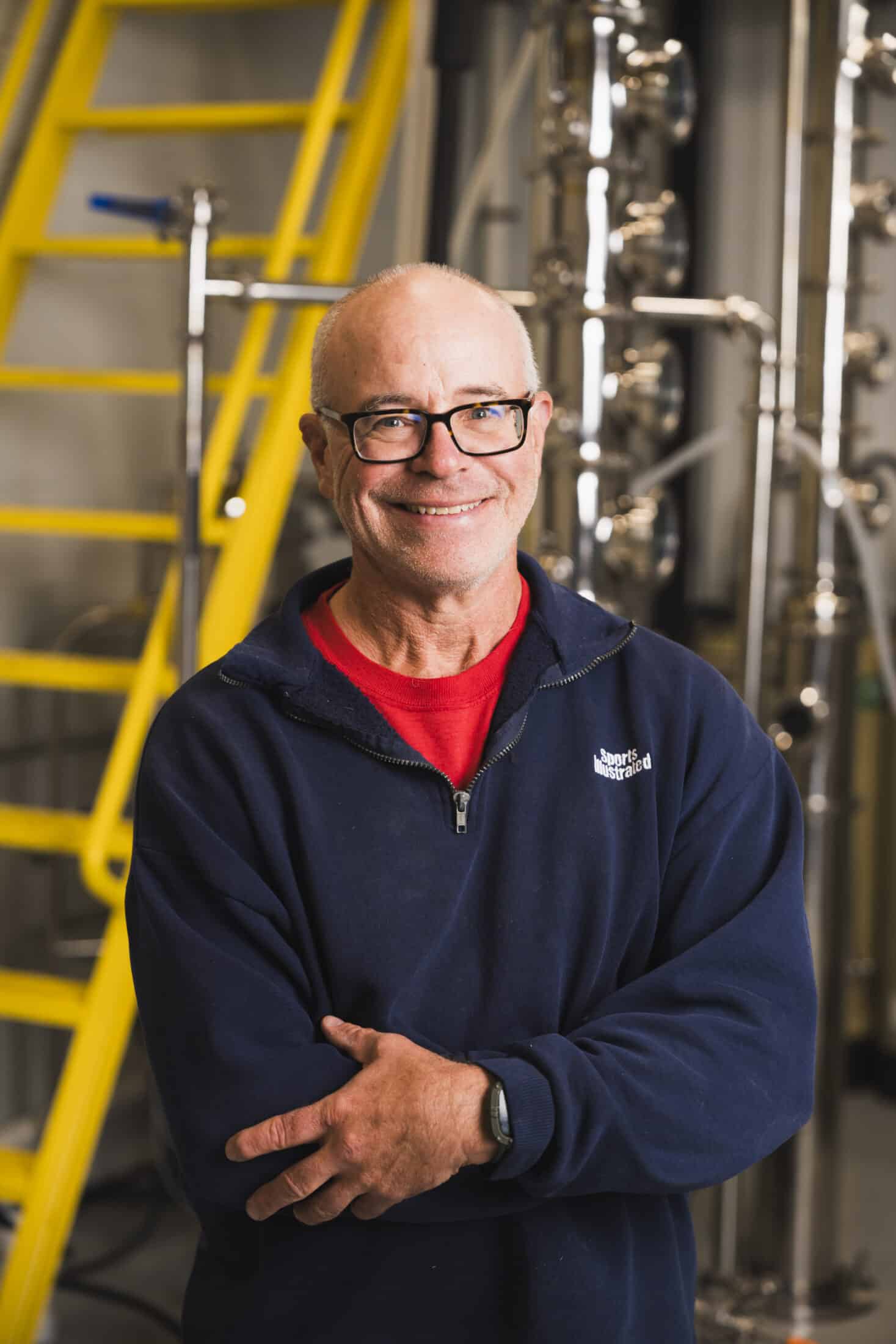Entrepreneurial Winemaker Earns Manufacturing Readiness Grant to Expand Business with Continuous Distillation Technology
Lanthier Winery
Case Study
Key Stats
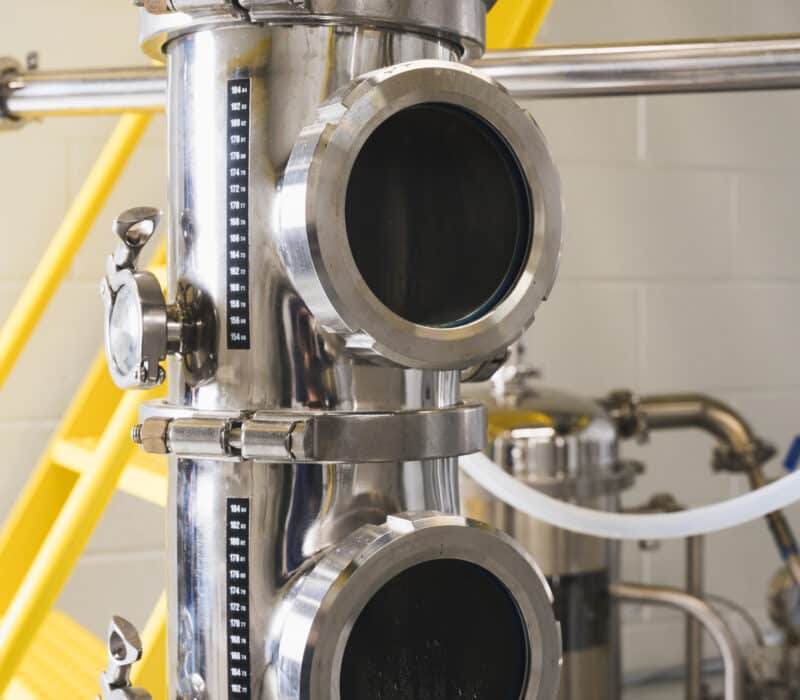
Company History
When an entrepreneurial couple discovered the Manufacturing Readiness Grant, it enabled them to purchase automated technology, helped them grow their production volume and their market.
Entrepreneurship was a natural step for the career journeys of husband and wife team, Chris Lanthier and Tami Hagemier. Each learned the value of starting and growing a business at their father’s knee. Chris’s dad started and succeeded in creating and successfully operating a sporting goods retail store. Tami’s opened a similarly successful pallet manufacturing company.
Tami was a nurse when the couple met, but she and a business partner had started a consulting company, contracting with the state to conduct inspections at home health and healthcare facilities. She also owned and operated a retail flower shop. Working in his father’s store, Chris learned the dedication and discipline required to run a business, from managing inventory and stocking the shelves to building one-on-on customer relationships. His adult career choice, though, was to become a chemical engineer.
Chris and Tami’s introduction to the wine industry was a three-day vacation in San Francisco. They toured the nearby wine country of the Napa and Sonoma valleys where most wineries were large operations with what Chris described as “big, 20- to 50,000-gallon tanks.” One of the last wineries they visited was on the smaller side and operated by a French vintner. When his vines were just three years old, the winemaker began making and selling his first bottles from those grapes. The vintner took advantage of a slow day at the winery to talk at length to the couple about the business of winemaking. A later road trip from Ohio to Maine gave Chris and Tami the opportunity to experience several small wineries. “These guys were making wine in 55-gallon plastic drums or stainless-steel beer barrels. Nothing big at all,” Chris remembered. “And I thought, I’m a chemical engineer, I could do that. Tami and I started talking about it. When we got home, Tami found a building in Madison, right next to a scrap yard. She tracked the owner down in Louisville and, after some conversations, we purchased this run-down piece of property for $30,000. It was one of the oldest, if not the oldest building in Madison.” It took them four years to rehab the property. “Our vision wasn’t to be a business that sold $100 bottles of wine. We wanted to make wine people bought.” These previously-not-wine-drinkers researched and discovered that many Midwesterners prefer sweet wine. Today, Lanthier Winery responds to those tastes with an inventory that is 50% sweet wines. “We make dry wines, too. We’re in it to be profitable, not just to win awards. Although,” he acknowledged, “we have won awards. Lots of awards.”
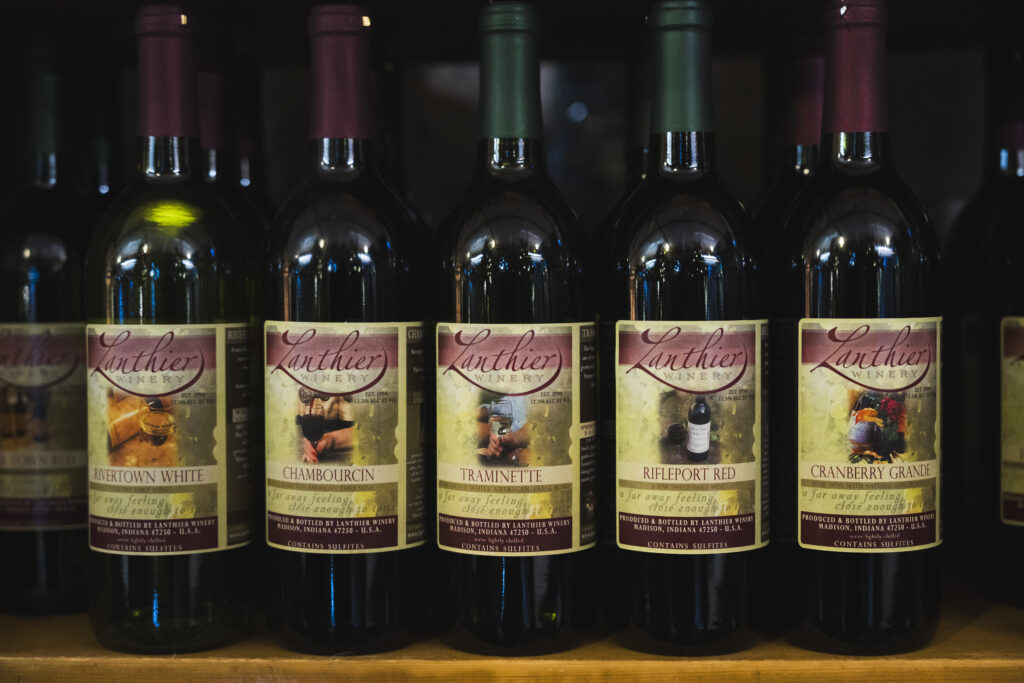
Their timing was perfect. It was 1994 and, when they applied for their winery license, they were handed license #13 in Indiana and learned that several prior licenses were for wineries no longer in existence. Wine was a very small, but growing, industry in the Hoosier state. Today there are 150 winery licenses in Indiana.
The actual wine making, bottling, shipping and other behind-the-scenes work is accomplished at their Hanover location. Chris is the vintner, maintenance guru and bookkeeper (also known as the “Cellarmaster” and “The Friendly Fermenter.”) He calls Tami “the brains.” She is the company’s CEO, “Master Gardener” and “Director of Chaos.” As part of those duties, she has created a winery garden that is the third most visited spot in Jefferson County, following Clifty Falls State Park and the Madison Historic District. The garden surrounds the company’s original Madison shop – now a showroom and retail outlet for Lanthier products. The garden also takes advantage of Madison’s reputation as a riverfront tourist attraction, hosting wine tastings and other popular special events. Full-time, part-time and seasonal staffers and volunteers come together to make Lanthier Winery the success it has become.
Today the winery makes not just wine, but gin and vodka, too. It was a natural progression since both of those spirits begin with alcohol distilled from wine. That extended product line is what first captured the interest of the MRG committee.
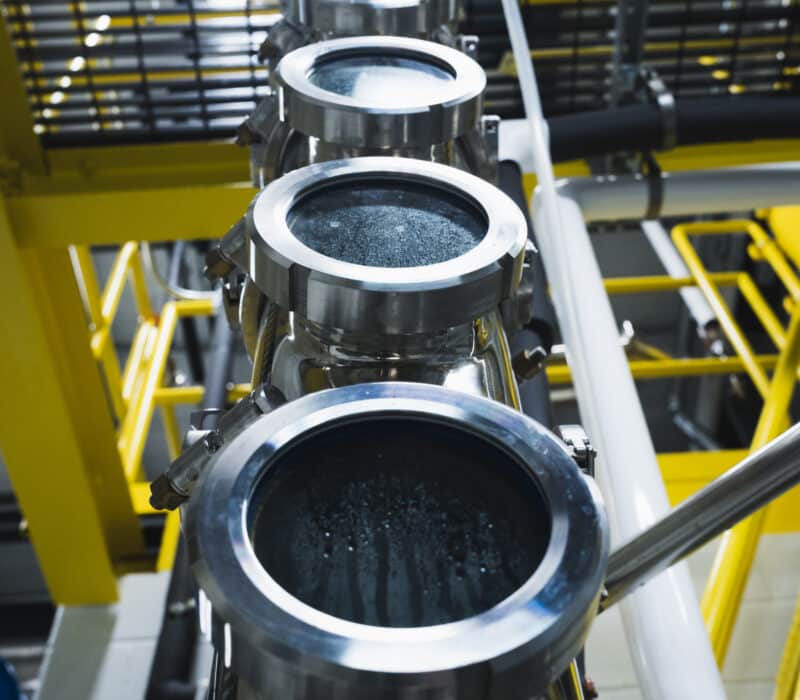
The Project
Spirits are a natural extension for small wineries, expanding not just the product line, but the market, too.
The notion that Lanthier should consider distilling wine as the base for spirits was first suggested to Chris in 2016 by a Hanover student who worked part-time at Lanthier. The student had some experience with distilling from an earlier job and suggested Chris look into the process. Trends in the market suggested younger drinkers were skewing more toward spirits than wine. They purchased a very small (15 gallon) still to test and refine the process. “You can distill spirits from anything with alcohol,” Chris said. “Wine, beer, anything. We use our 15% alcohol wine.” The basic recipe, he explained, is to heat the wine in a still. Alcohol is more volatile than the water in wine and boils off first, generating a vapor that begins as 55% alcohol and reaches approximately 94% by the end of multiple distillation batches. This highly-concentrated alcohol is finally diluted with water to 40% alcohol by volume, creating vodka. Gin is made from the vodka by soaking botanicals (such as juniper) in it for a few days. Flavors are infused into the gin and further enhanced by another distillation process.
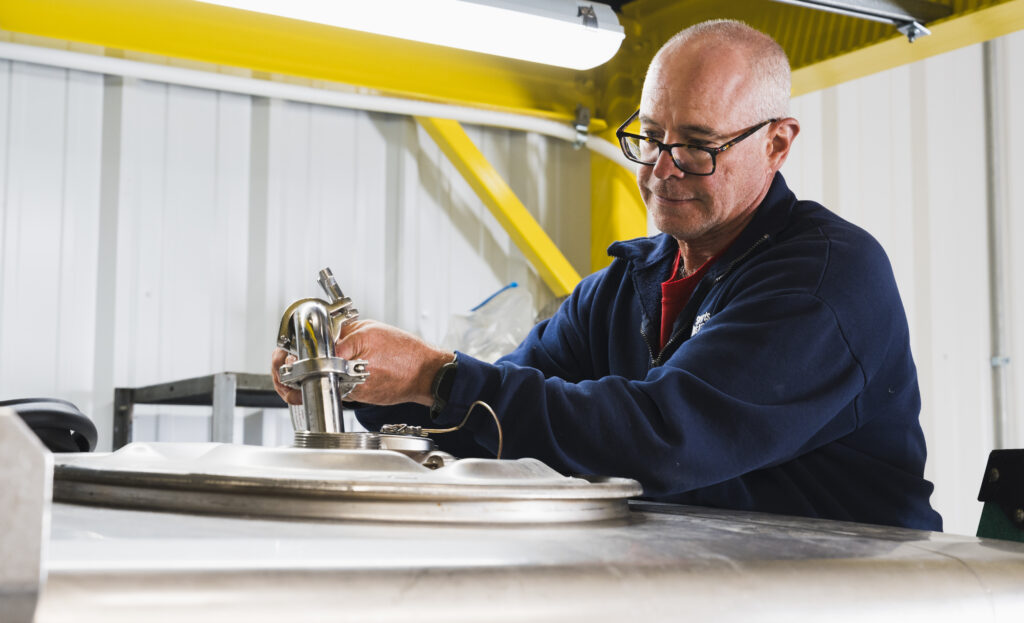
Lanthier’s original 15-gallon batch stilling trial delivered 50 gallons of vodka, and the entire procedure took approximately two weeks to complete. The numbers demonstrated that, without more advanced equipment or an increased payroll, it would be impractical to move forward from a business standpoint. A tour of distilleries in nearby Southern Indiana demonstrated how streamlined and cost-effective the industry could be when stills were operated 24 hours a day, seven days a week. The equipment to provide that kind of boost to Lanthier’s production, known as continuous stills, was outside of the company’s budget…until Chris learned about the MRG program and applied for a grant. Lanthier’s awarded $50,000 grant enabled the purchase of a continuous still to support a more automated distillation process – resulting in the addition of gin and vodka to the company’s product line.
This equipment’s main components are a 4-inch diameter continuous still that achieves distillation through direct steam injection, producing 150ml of concentrated spirits per minute. This system can run independently for 24 hours with significant improvements to alcohol recovery when compared to traditional batch stilling, coupled with nearly 75% savings in energy costs. This equipment isn’t an industry standard, but it presented a unique and compelling business case for a small operation in the artisan distillery market, earning the MRG committee’s approval.
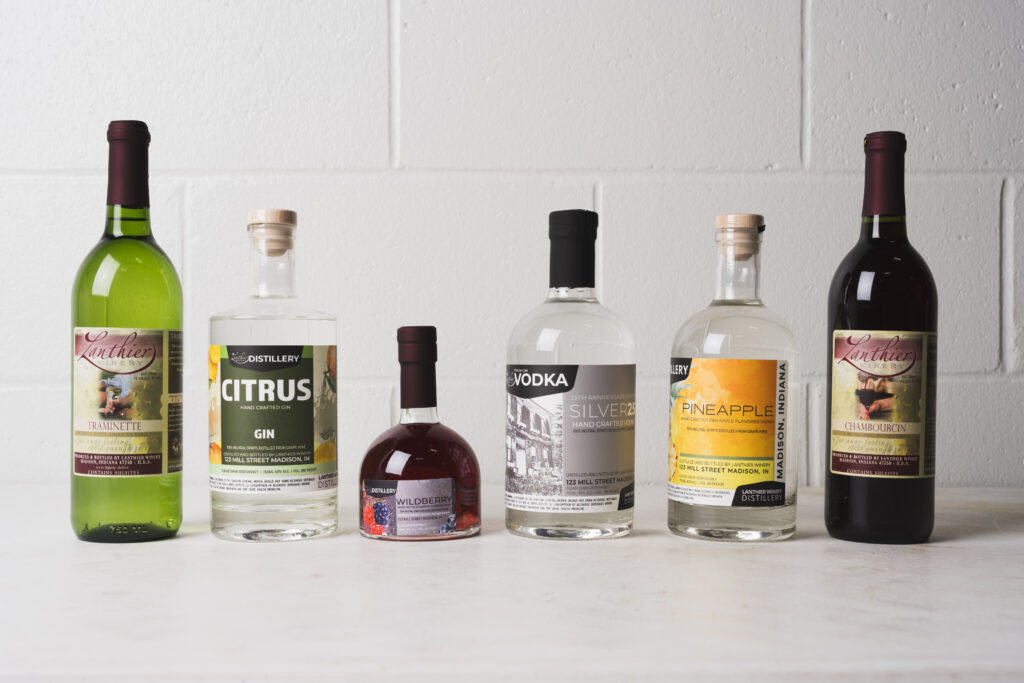
Manufacturing Readiness Grants (MRG) provided by the Indiana Economic Development Corporation and administered by Conexus Indiana are available to Indiana manufacturers willing to make capital investments to integrate smart technologies and processes that improve capacity. An MRG of $50,000 made the decision to move forward with an automated technology upgrade an easier one for Chris and Tami of Lanthier Winery.
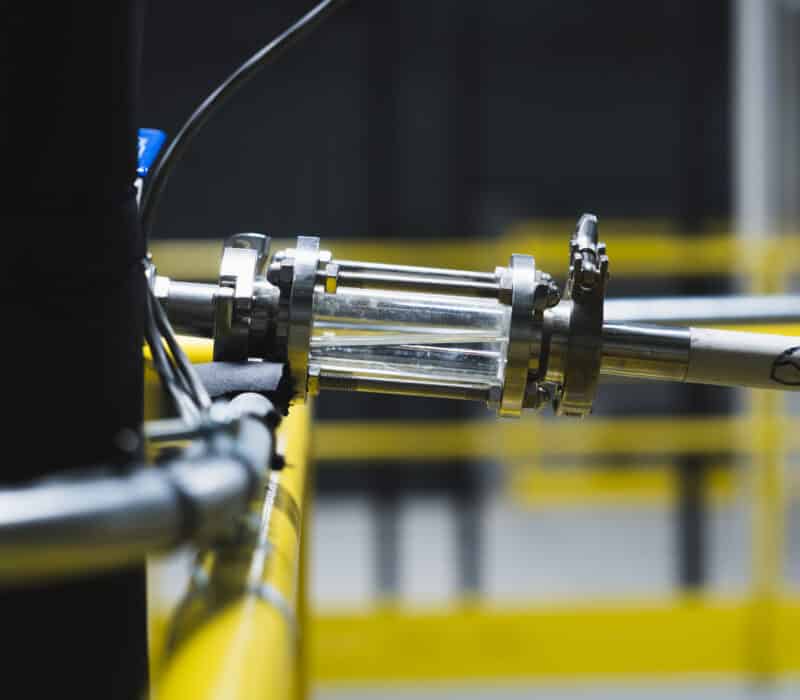
Shared Learnings
Be prepared to respond to unforeseen issues with smart technology upgrades, and a non-local equipment supplier can add time to the startup progress.
Chris is the sole winemaker, but is supported by team members and equipment consultants who help bring their product to market. Lanthier’s equipment purchase was from a Florida company, so technical support was limited to video conferencing. Without an IT department, or even an IT-savvy assistant, Chris faced the all-too-typical tech startup snags with only remote assistance. When unanticipated issues with installation arose, he initially found the supplier’s representative less than responsive. That improved significantly when the rep was replaced with another employee. Problems were addressed quickly, and parts sent promptly. Chris’s best advice: even larger companies should anticipate new equipment installation to take longer than expected.
An invested workforce can be an enormous asset for a small business transitioning to advanced manufacturing, too. While Chris farmed the grapes, as many as five employees were needed to help with the overall manufacturing. Spirits are hand-bottled, and even after purchasing a small bottling line, bottling requires two additional people to operate the line. Lanthier’s employees were happy to step up. Keeping the workforce informed is essential to maintaining a positive attitude around new technology and automation. And, once potential roadblocks are eliminated, it’s still necessary to look to the future. “You have to keep growing,” Chris believes. “If you’re not growing or expanding either your volume or your profit line, you’re going to fail in the long run. This was a way for us to do both.”
Since the implementation of their MRG-enabled distillation equipment, Lanthier Winery has continued their forward-looking approach with the introduction of wine and vodka slushie sales – with demand quickly justifying the purchase of three individual slushy machines. Looking years down the road, the Lanthiers are keeping their eyes out for the ideal candidate to join the staff and learn the business from the founders so they can take over when it comes time for Chris and Tami to step away.
“If you’re not growing or expanding either your volume or your profit line, you’re going to fail in the long run. This MRG-enabled project was a way for us to do both.”
Chris Lanthier
Lanthier Winery
